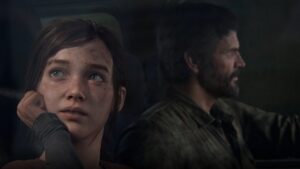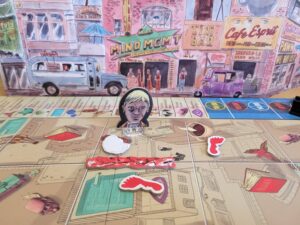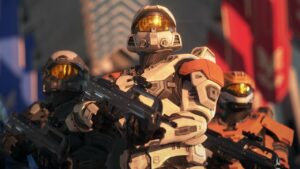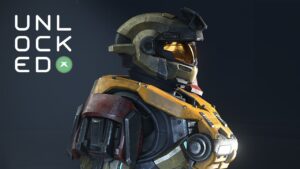When it comes to VR survival horror games, you can’t get much better than a nice handful of walker guts to make your mornings pass a bit more smoothly. At least, that’s how things work in this post-apocalyptic version of New Orleans, which serves as the setting for 2020’s exceptional The Walking Dead: Saints & Sinners and its brand-new sequel, The Walking Dead: Saints & Sinners – Chapter 2: Retribution. That’s a mouthful of a name, pun intended, and yet it’s less of a sequel in practice and more a perfectly serviceable standalone expansion to the original. Rather, it would be, if not for a series of sizeable and often game-breaking bugs that – when combined with the struggling computational power of the Meta Quest 2 – frequently make for a jarring experience that would fit right at home in a real zombie apocalypse.
As in The Walking Dead: Saints & Sinners, Chapter 2 has you romping around the Louisiana bayou as the Tourist, a survivor who’s made a name for themselves amongst the locals following the events of the original campaign. Just like before, you can choose a few options at the beginning of Chapter 2 which determine things like your skin color and whether you play with a masculine or feminine voice actor, but character creation doesn’t get much more sophisticated than that. In its favor, a first-person VR game doesn’t really need a fancy character creator and it’s great that it throws you right into the action after a short but skippable tutorial segment and an introductory cutscene.
Speaking of the action, there’s a lot more of it here than in the original – at least, prior to the far more combat-focused Meatgrinder and Aftershocks updates, which added an enjoyable wave survival mode and a series of endgame missions that are sorely missed in the sequel. It’s a bit odd for the wave survival mode to be missing here, especially given the addition of new weapons like the chainsaw and the sawed-off shotgun, both of which are plenty of fun to wreak havoc with. It’s satisfying to watch walkers split in half in a shower of blood – when the framerate doesn’t completely screech to a halt on the Quest 2, that is, which happens more often than might be considered comfortable (especially considering the chainsaw is a melee weapon that requires both hands to use properly).
“
Whereas the first game focused on stealth by forcing you to slowly navigate a world sparse of resources necessary to fight the gradually overwhelming horde of walkers and hostile humans, Chapter 2 goes all-out with its combat, practically throwing weapons and other important resources at you from the first few steps out of the opening area. The loss of gradual progression from having basically no resources to being a powerhouse does lose some of the original’s nuance; weapons feel slightly less valuable early on, lessening a bit of tension that once existed in regard to inventory management. But with loot more readily available, you don’t need to scavenge with a fine-toothed comb anymore either, which makes for a relaxed change of pace that still feels scary since the quantity and aggression of walkers has been turned up a notch to accommodate.
The increased action also makes it fortunate that Saints & Sinners still offers the most entertaining melee combat of any VR game short of Blade & Sorcery, featuring a wide variety of fully physics-simulated weapons that generally do feel good to use, each allowing you to creatively carve your way out of danger. Many of these, like the often convenient one-handed cleaver and Michonne’s stylish two-handed katana, are both fantastic for beheading walkers on short notice.
“
Alongside the enhanced arsenal, it also sends a far higher number of enemies at you at any given moment, clearly straining the Quest 2’s hardware. In some extreme cases, Chapter 2 begins to experience frequent crashes and other glitches that just make the whole thing less palatable across the board. One section of the campaign crashed seven times in a row – forcing me to lose 20 minutes of progress each time – until I went back to the home camp and threw every loose physics item into the storage bin. It’s impossible to know if that was the main culprit, but by the end of that particular section, I was banging my head against the wall looking for solutions.
As should be expected, there are a few new zones and a handful of new weapons to play with, but Chapter 2 is still filled with way too much content from the original game. Most of the time you’ll be running back and forth through old zones like The Shallows, Bywater, The Ward, Rampart, and so on. A few of these locales don’t even serve any story purpose this time around, and it feels odd that you can still visit them at all – like some vestigial organ hanging off of an aging corpse. (Please don’t imagine what that would actually look like.) Be warned, however, that Chapter 2 does very little to explain the premise of ongoing events, aside from some expositional dialogue early on, and you might be a little lost if you’re a first-timer.
The issue is that Chapter 2 doesn’t actually feel like a new game at all, despite a half-hearted continuation of the original’s story. It carries several threads from the original to their final conclusion amidst a handful of new (albeit less interesting) characters, but this iteration struggles to feel as consistently paced as the original in more ways than one. None of Chapter 2’s characters really make that much of an impact compared to the original’s Casey, who had interesting and nuanced motivations in the first campaign. Each of your quests also feel railroaded to a specific conclusion no matter what you do this time. On several occasions, I killed an NPC to fast-track a specific mission, only to find that it broke the quest’s progress until I left the zone and returned – finding the same NPC alive once more, even generating duplicates of unique quest-critical items that aren’t supposed to be duplicated at all. It’s all so much less polished than I remember the original being, and that’s a major disappointment.
At least Chapter 2 hints at its heavily-armored, axe-wielding secondary antagonist pretty early on, and like Mama (the primary antagonist who operates from the Tower,) he too casts a shadow over your movements around New Orleans. However, the story does a lousy job of keeping the tension going between you two, and after he makes his initial introduction, he just sort of disappears – at least until you go and fight him in a middling and ultimately forgettable boss fight toward the end. In any case, this is one villain who won’t be making it to the final season. Things do pick up around the very end though, when you finally get to go on a full-fledged assault against the Tower, an authoritarian entity that’s quite literally loomed over the events of the series since the original’s story. It’s set up well enough, and it makes for a satisfying final standoff when it’s not pushing the Quest 2 past its limits, though I crashed and needed to restart several times while playing the final level as well, resulting in even more needless frustration that really took the thunder out of Chapter 2’s climax.
Armored Gore
If you liked the immersive survival mechanics from the original, there’s no particular reason you wouldn’t like this one too – for all intents and purposes, it’s the same exact game, warts and all. It’s disappointing that it seems like the AI hasn’t received any updates, and it sucks that human enemies are still some of the dumbest in any VR game. They’re most dangerous towards the end when you need to stand off against groups of armored foes wielding assault rifles and shotguns, but they shoot with the accuracy of a stormtrooper and they rarely outnumber you the same way walkers can – and often will – if you’re not careful to keep a low profile while scavenging. It’s also disappointing that there’s only one new variation of walker to face off against – a heavily armored variant – and even that variant doesn’t really behave differently from the others you’ve already fought countless times. It doesn’t even have all that much extra health, and you can just decapitate it with any old cleaver. Walkers all die the same way in the end, but it’d have been nice to run into a handful of new creatures with new abilities.
“
But even amidst the lack of enemy variation, two new upgradeable crafting stations are a welcome inclusion – making five in total – granting you a few more options for progression and loadout customization as you loot items and break them down into raw resources at your base camp. The interplay between those systems is a staple of the original, and Chapter 2 benefits from the addition of new tools to that mix – such as the flare, which ignites when thrown and is highly useful for quickly distracting or momentarily guiding a herd of walkers to a specific location while you make a nimble getaway.
It’s also great that you can now visit zones at night, a new feature that allows you to approach missions from a completely different angle. The same zones are meaningfully different after dark, affecting both visibility and NPC behavior. You can also do special night-exclusive missions for a group of survivors called the Exile Trade Network in exchange for loot, though after around 15+ hours of play they seemed like no more than fetch quests that give pretty basic rewards and could be comfortably ignored if you didn’t feel like doing them.
That said, visiting zones at night comes with one massive risk: walkers are far more numerous, and they practically multiply, making moonlit strolls around NOLA feel appropriately treacherous. They also move faster at night, meaning every walker encounter feels more dangerous and frantic than usual. Since you only have so much stamina to use at any given moment, it can be easy to get overwhelmed – a circumstance only somewhat offset by the vastly increased availability of guns and ammo, which still need to be reloaded and aren’t that much help when five or six walkers flank you from all sides. Melee weapons, especially improvised weapons made of broken bottles and screwdrivers, are highly important once again – allowing you to stay undetected. Fortunately, there are always several avenues you can take at any moment to get around the ravenous herd, and you can even use other humans as bait, killing two humanoids with one stone.
Just like before, you only get a limited amount of time each day to do things before needing to head home and sleep. Likewise, resources become scarcer and walkers become more populous each in-game day. The good news here is that you can at least finish certain missions at night, allowing you to progress several main story quests in the same in-game day if you’re looking to fast-track your way to the end. The other good news is that valuable loot is far more common at night, where you can often find entire backpacks full of goodies next to the unfortunate souls who once needed them for their own survival. It’s also pretty neat that you can find new types of crafting materials like biomass and phosphorous – critical for building convenient new upgrades like laser pointers for your pistols and rifles or highly-nourishing mil-spec rations – by switching your flashlight to UV mode, which sacrifices visibility for the ability to quickly find special items available only at night.








